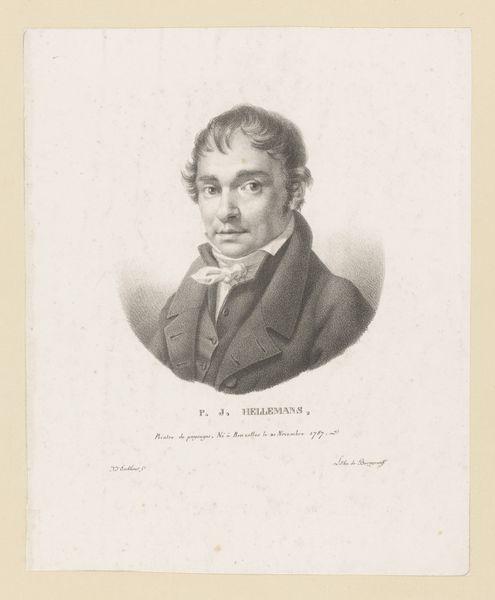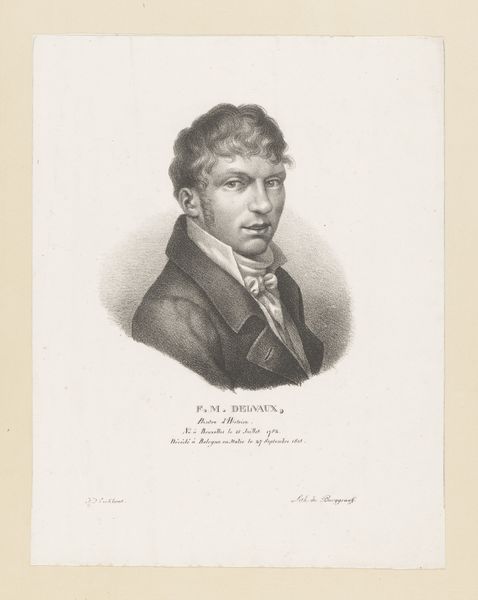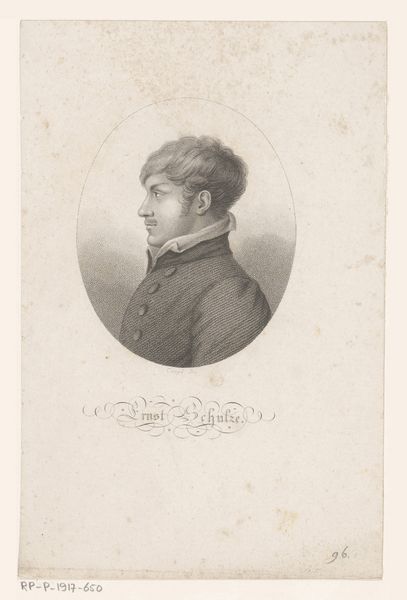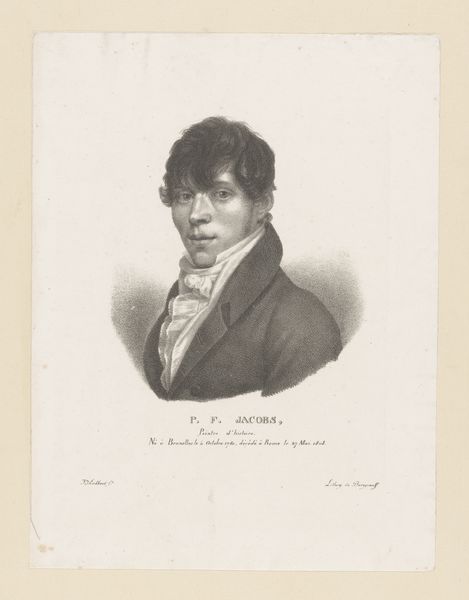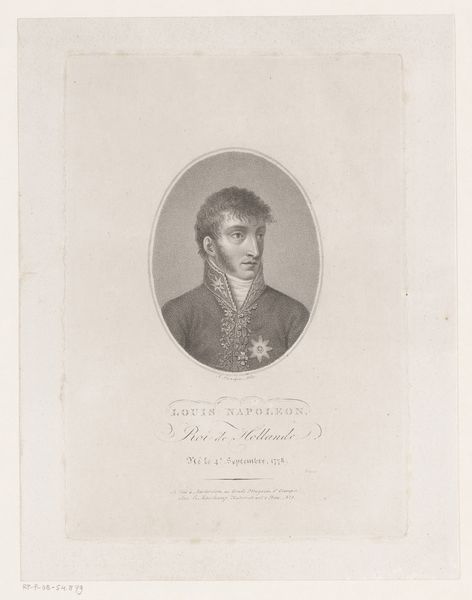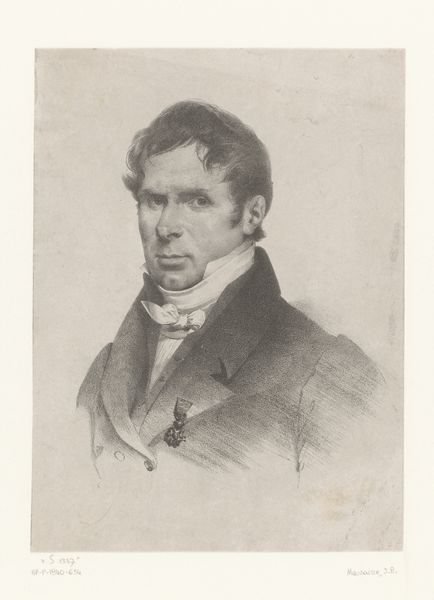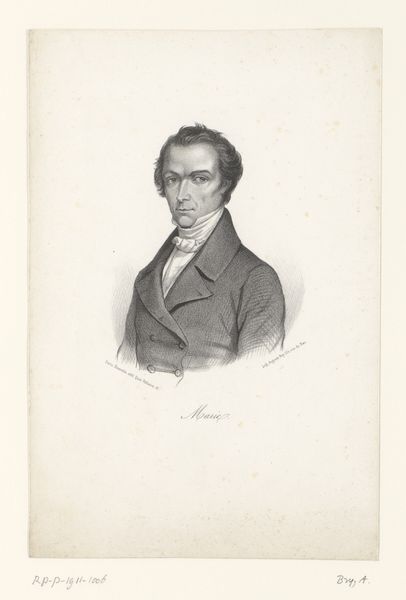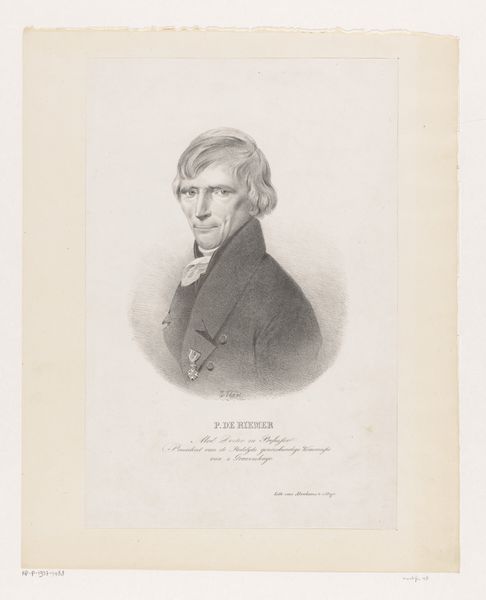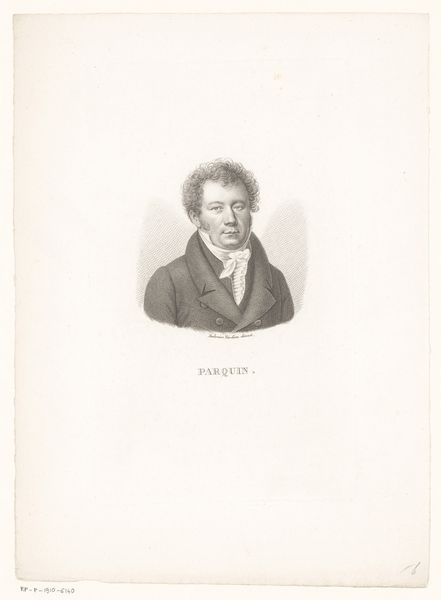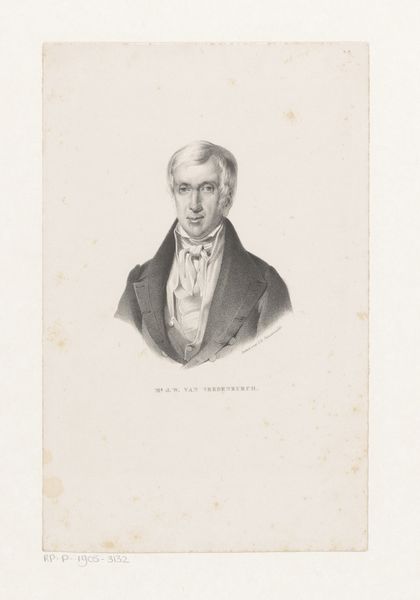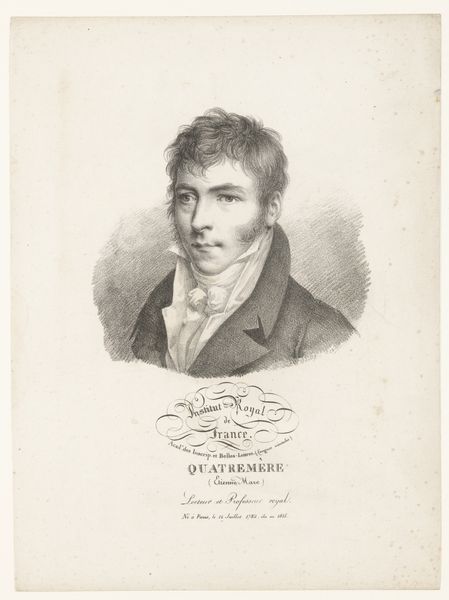
drawing, print, paper, ink, engraving
#
portrait
#
pencil drawn
#
drawing
#
neoclacissism
# print
#
pencil sketch
#
paper
#
ink
#
pencil drawing
#
portrait drawing
#
engraving
Dimensions: height 506 mm, width 352 mm
Copyright: Rijks Museum: Open Domain
Editor: Here we have Auguste Toussaint Lecler’s "Portret van André Dupin," created in 1827. It's a print, a drawing with ink on paper... I find the subject’s expression very stern. What jumps out to you when you look at it? Curator: I notice the labor and materials involved in producing this print, especially during that era. Consider the process: the original drawing, the engraving, the printing itself, each stage involving skilled artisans. This wasn't a solitary act of "genius," but a collaborative process embedded in a specific economic system. How do you think this process shaped the final artwork? Editor: That's fascinating! I hadn't considered the collaborative aspect. So, the choice of printmaking—as opposed to, say, an oil painting—speaks to something about accessibility or dissemination of the image? Curator: Precisely. Printmaking allowed for the wider distribution of Dupin’s image, influencing public perception of him. Dupin, as a prominent lawyer and politician, surely understood this. Do you think he might have commissioned this portrait specifically to enhance his public image through mass reproduction? Editor: It seems highly plausible! The control of the image would have been in Dupin's interest to portray himself to the public as he saw himself. Was this a common strategy? Curator: It became increasingly common. We see a rise in printed portraits coinciding with a growing middle class and increasing political engagement. Consider the paper itself - its availability and cost reflect broader economic shifts. Can we see the material conditions of 19th-century France reflected in the print itself? Editor: I guess so! Considering the labor, the materials, and the intention behind its creation completely transforms my initial reading of it. Thanks for making me see that, really! Curator: Indeed! Recognizing the materials and their relationship to society enhances our understanding and appreciation of art in so many contexts.
Comments
No comments
Be the first to comment and join the conversation on the ultimate creative platform.
